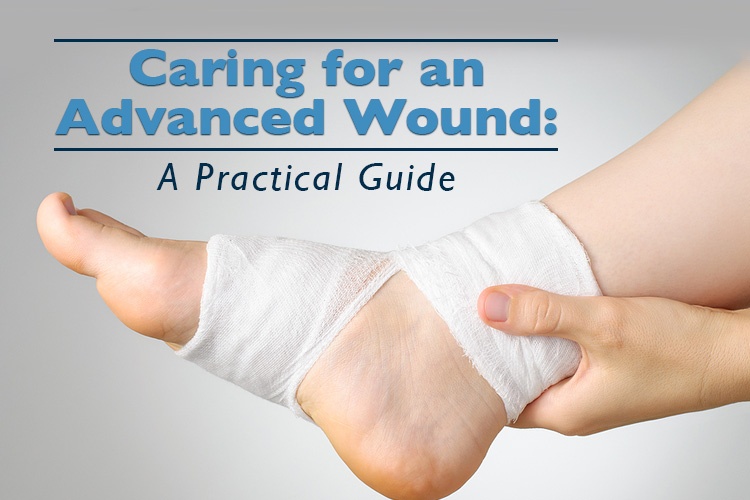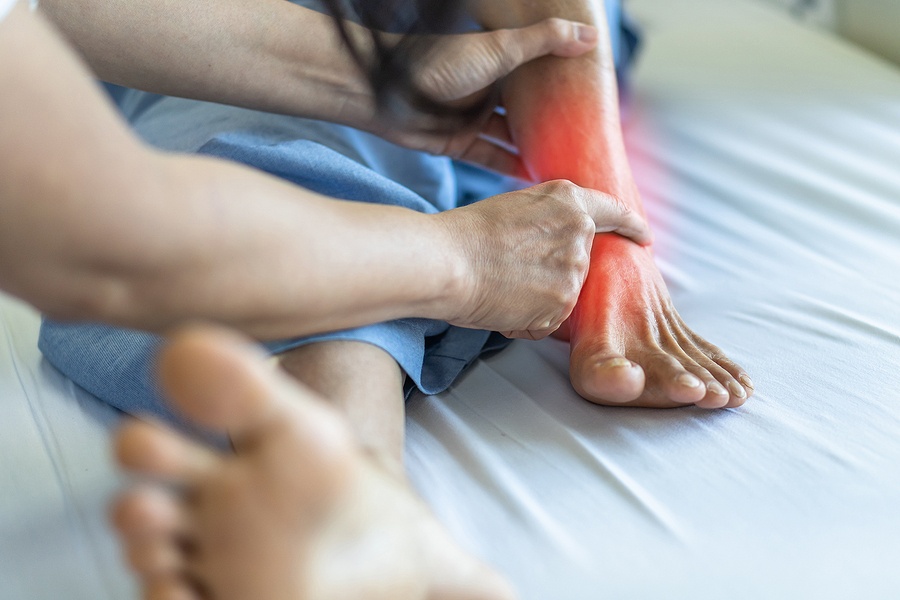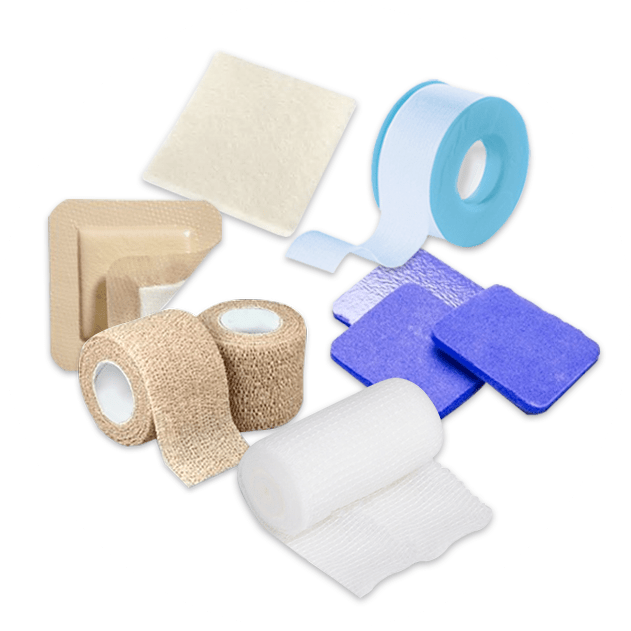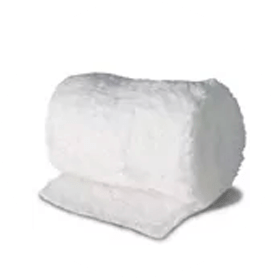Caring for an Advanced Wound: A Practical Guide
This post was reviewed by our Director of Clinical Excellence and Oversight.
Wound care—for yourself or someone else—is a serious task, especially because of the need to guard against infection. Let’s dive into some wound care basics, warning signs to look out for, and the types of products you might need to help a wound heal properly.

Chronic Wounds: Start Here
A wound that lasts more than three months without healing is considered chronic. There can be many causes, including diabetes, poor blood flow, vascular disease, reduced mobility, trauma to the area, bacteria, or a weakened immune system. Your care team will treat the underlying cause, the wound itself, and any pain that results. You play an important role by providing routine wound care as prescribed.
Types of common, chronic wounds include:
- Foot ulcers that affect people with diabetes, heart disease, kidney disease, obesity, and those who smoke
- Venous ulcers in the legs and ankles
- Arterial (ischemic) ulcers of the lower extremities caused by Peripheral
- Artery Disease (PAD)
- Pressure ulcers, or bedsores, due to constant pressure to an area over time. People who confined to bed or use wheelchairs are at risk for these.
Follow Doctor’s Orders Carefully
Whether you’ve had a medical procedure, or were seen in the doctor’s office, you should have a set of instructions that tell you how to care for the wound, including what supplies to use. Be sure to follow your doctor’s orders including any instructions on cleaning the wound and what types of wound care dressings, gauze, tape, and other supplies you should use on it.
If you see any of the following, let a member of your care team know. Speak up if you notice a change, or something that just doesn’t seem—or feel—right.
- Redness or swelling in the area
- A new or worsening odor
- Increased drainage, pus, or bleeding
- Worsening pain
- Nausea, vomiting, fever, or chills
- An usual change in blood sugar

Diabetes Complicates Things
People with diabetes have a 15-25% chance of developing a chronic wound. That’s because high blood sugar can cause a person’s arteries to stiffen, and their blood vessels to narrow. That can lead to poor circulation which makes it hard for those healing blood cells to reach a wound. Also, inflammation and immune system problems that are sometimes associated with high blood sugar can slow healing.
Another concern to be on the lookout for is loss of feeling in the feet, which can be common to those with diabetes. It’s called neuropathy and it means that a small cut or minor injury could go undetected and get worse. That’s why it’s important for people with diabetes to wear shoes, even at home, to keep their toenails trimmed, and to inspect their feet—including the bottoms—every day.
“People with diabetes have a 15-25% chance of developing a chronic wound.”
Out with the Bad
Sometimes, a medical professional will clean and remove dead tissue from a chronic wound to promote healing. It’s a process known as debridement and there are several ways it can be done using instruments, a type of water jet, or special dressings. One unusual-sounding treatment uses maggots bred for medical use and placed on the wound.
After a wound has been cleaned, it should be covered with a dressing. Dressings help in many ways—by absorbing fluids, delivering medicine to the area, keeping it moist, and protecting against infection. Store your clean dressings in a container with a lid. Keep the container off the floor and away from kids and pets. There are many types of wound dressings. Depending on the type of wound and how severe it is, your doctor might recommend dressings made of:
- Transparent Film
- Gauze
- Hydrogel
- Hydrocolloids
- Foam
- Alginates (seaweed)
Some dressing have additional ingredients such as silver added to help fight bacteria.

Get Into a Routine
One of the best ways to up your dressing-changing game is to get into a routine and do things the same way each time. Follow these steps:
- Gather supplies including a trash bag, cleanser, hand-washing supplies, and tape or wrap to hold the dressing in place.
- Wash your hands thoroughly with soap and water and, if possible, use gloves.
- Place the supplies on a clean paper towel or other protective surface, not directly on a bed or dresser.
- Carefully remove the used dressing and throw it away.
- Examine the wound for foul odors, excess drainage, redness, or swelling.
- Clean your hands again.
- Carefully clean the wound if recommended by your doctor.
- Apply the fresh dressings.
- Toss the bag with the used dressing into a second plastic bag and put it into the trash.
- Wash your hands one final time.

“Store your clean dressings in a container with a lid. Keep the container off the floor and away from kids and pets.”
Can Nutrition Affect Healing?
Yes, it can! According to the Cleveland Clinic, people battling a wound or an infection need extra protein, calories, and nutrients to build and repair damaged tissues.

Here are some mealtime tips that may help a person with a chronic wound help it heal faster:
- Eat the protein part of your meal first in case you get full and can’t finish.
- Choose whole grains because they have more protein than other grains.
- Make sure to get several servings daily of fruits and veggies.
- Include high-quality dairy products like cheese and Greek yogurt into your diet.
- Watch your weight; if you find yourself dropping pounds, check with your doctor.
Let’s Do This Together
When patients and caregivers partner with their medical professionals and a top-rated medical supply company like HCD to care for wounds, everybody wins. Whether you’re managing a post-surgery incision, bedsores, or diabetic foot ulcers, Home Care Delivered has the cleansers, dressings, and gauzes you need to keep your wound clean and protected.
We’re also pretty awesome at saving you time and trouble! After your first order is confirmed, your supplies will arrive within 1-2 days. If you’ve never ordered with us before, you’ll be amazed at how quick and easy it is. Our customer service team actually completes the paperwork for you!

Disclaimer:
Unless otherwise noted, the recommendations in this document were obtained from the sources indicated. Be advised that information contained herein is intended to serve as a useful reference for informational purposes only. HCD cannot be held responsible for the continued accuracy of or for any errors or omissions in the information. All trademarks and registered trademarks are the property of their respective owners.
Get Insurance-Covered Wound Supplies
Accurate Orders | We Handle the Paperwork

